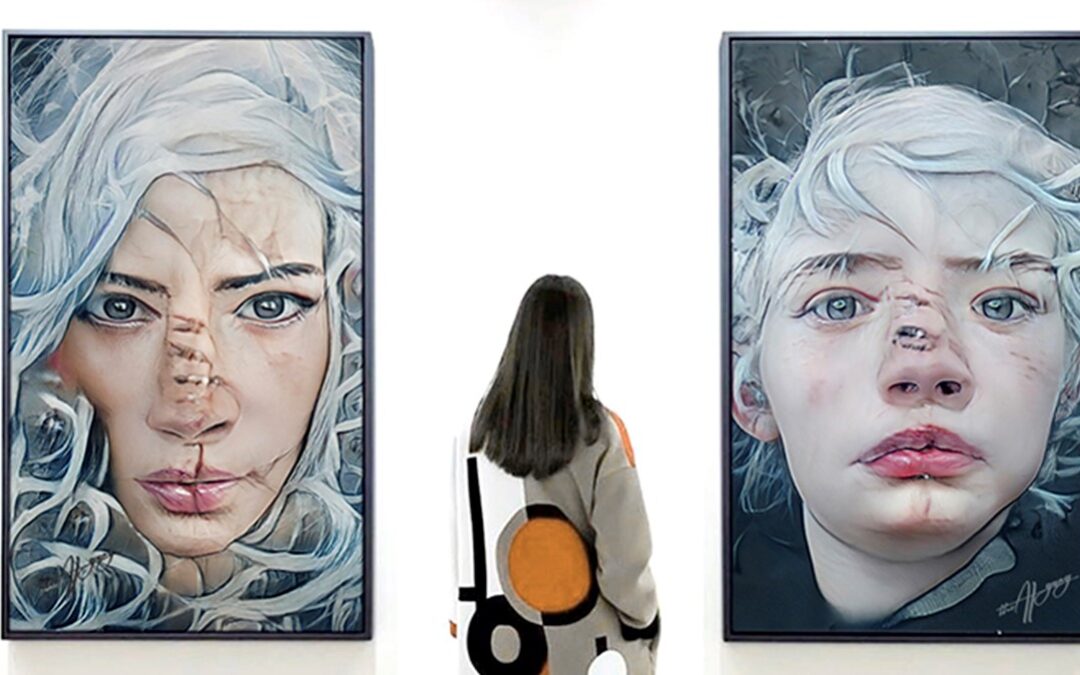NFTs took the world by storm. It has been almost impossible to spend time on the internet for the past year and a half year without encountering some kind of NFT related content. This might not come as a surprise considering that, according to a report by Chainalysis, the sales for this particular crypto asset reached nearly $41 billion in 2021 (another report by DappRadar estimates $25 billion), making NFTs one of the hottest commodities.
For the ones who still don’t exactly understand what is an NFT; NFTs are unique digital tokens or identifiers that cannot be interchanged with something else. Just like cryptocurrencies such as Bitcoin or Ethereum, NFTs are recorded on the blockchain to ensure that they are one-of-a-kind. What makes NFTs a game-changer is the fact that for the first time on the internet there can be scarcity, meaning that an original work will have value since there cannot be endless copies of it.
NFTs can link ownership to any unique digital asset: art, real estate, clothing, or even memes. At the moment, most NFTs are seen as collectible items but soon, their areas of usage will most likely be much more diverse.
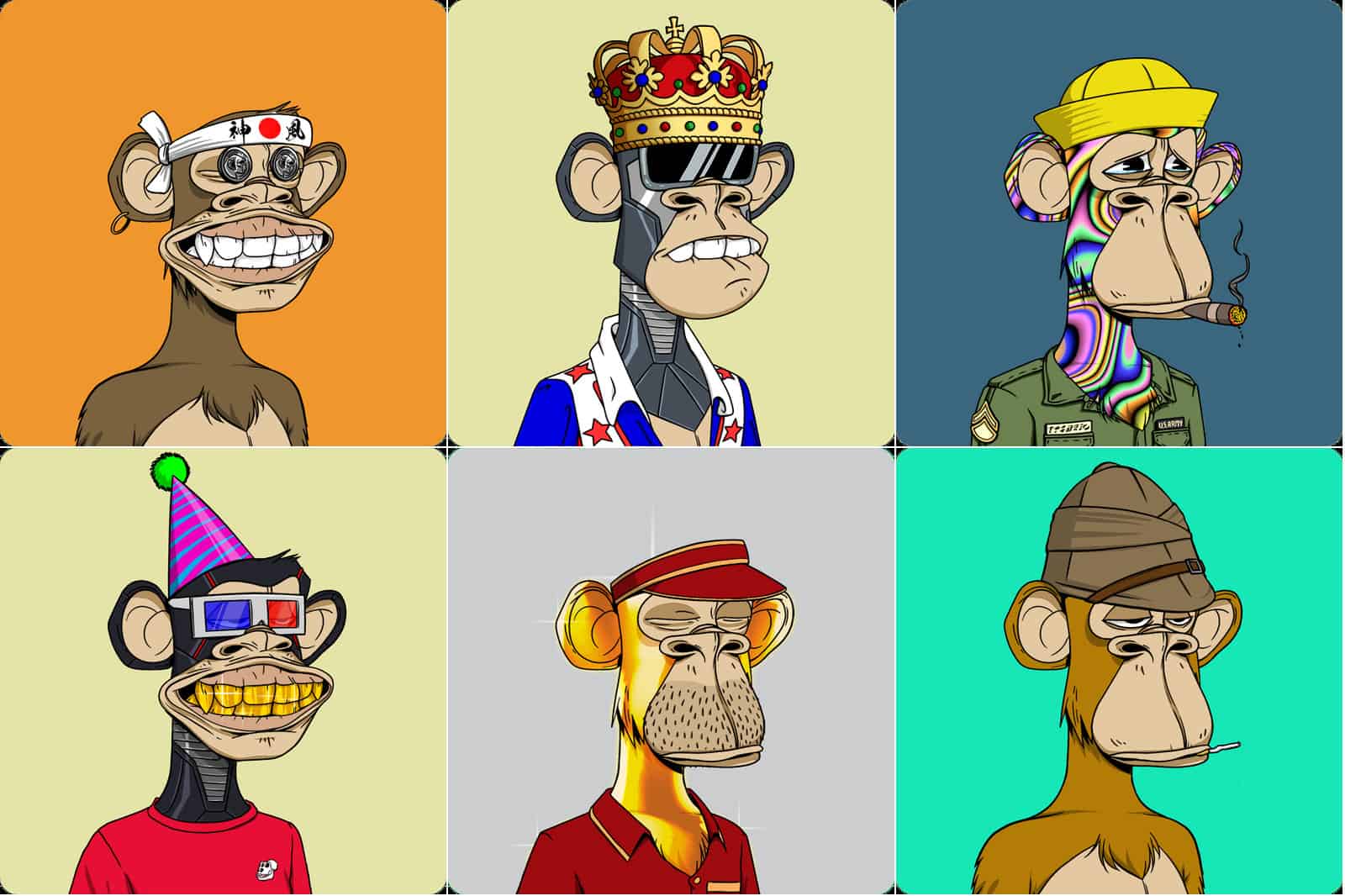
NFT art, in particular, seems to be making the biggest impact right now. Every day a new NFT project trends on Twitter. From projects such as CryptoPunks and Bored Ape Yacht Club that are seen almost as tickets to exclusive clubs to projects created by brands for marketing purposes, the world of art NFTs appear to offer something for everyone. Back in August 2021, the sales of tokens during Christie’s Art+Tech summit alone amassed up to $93 million.
Among all this hype for NFTs on the internet, there seems to appear a new and interesting trend: AI-generated art. This new art form created by combining the human imagination with advanced technology has been making the rounds on Twitter lately.
One of the reasons for this buzz is a new app called Dream which was created by WOMBO. On Dream, the users can enter a prompt describing what they want AI to paint and choose a style (the app offers iconic art styles like Ghibli, Salvador Dali, Steampunk, Synthwave, and so on). The resulting image is always somewhat abstract yet loyal to the user’s request and aesthetically compelling. The process in and of itself is so much fun and unique. Moreover, very soon, the app will give the users the ability to mint their AI-generated art pieces as NFTs. Dream is one of the many exciting AI-generated art projects that are getting popular among the NFT collectors these days.
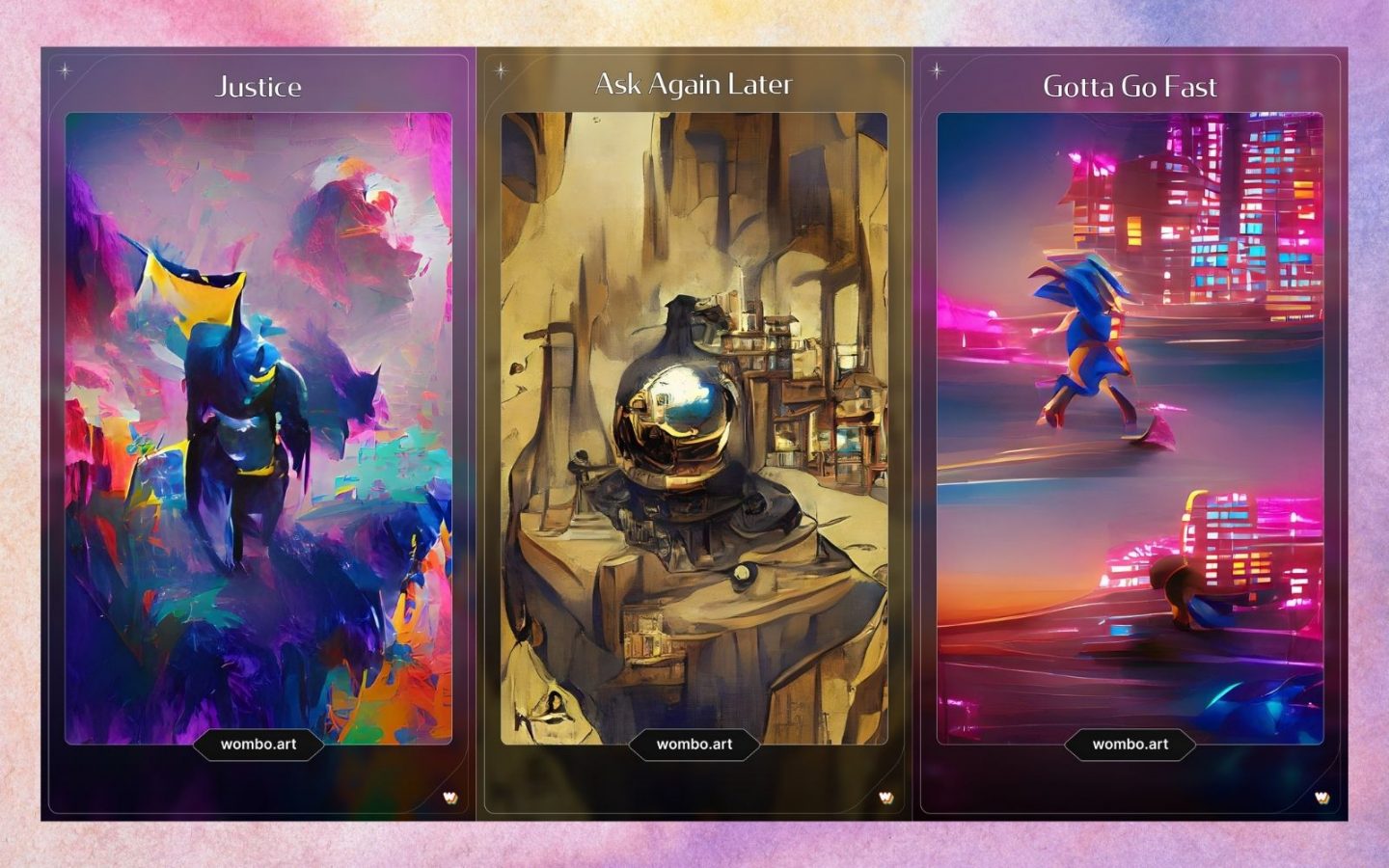
So, what exactly is AI-generated art and what does it entail for NFT market?
Generative art is not exactly a new concept. As a matter of fact, some of the earliest examples of generative art were in the form of music. Johann Philipp Kirnberger’s 1757 “Musikalisches Würfelspiel” (or Musical Dice Game) is considered one of the first examples of a generative system. It was a dice game based on selecting musical sequences from a pool of previously composed pieces. Later on, contemporary visual artists like Ellsworth Kelly and François Morellet had experimented with this art form by using chance operations on color grids.
In the 20th century, the adoption of artificial intelligence by artists created a plethora of opportunities for generative art. In fact, with the development of artificial intelligence, the world of art as a whole entered a whole new phase. Artificial intelligence can shortly be described as a branch of computer science concerned with creating intelligent computer systems capable of performing tasks that would naturally require human intelligence. Different types of AI are classified as reactive machines, limited memory, theory of mind, and self-awareness. Smart assistants such as Siri and Alexa, self-driving vehicles, conversational bots, Spotify or Netflix recommendations, and even email spam filters are all different examples of artificial intelligence. Computer systems that can comprehend the meaning of human language are capable of learning from experience and making predictions.
There are various ways AI is leveraged to create art, especially generative art. However, by far the most commonly associated with AI in addition to being used to create NFTs is Generative Adversarial Networks (GANs). Previously AI had been used exclusively to work with pre-existing images. Broadly known as “computer vision”, a new field of computer science studies how computers can perceive digital images or movies at a high level. Researchers in this area work on creating large image databases, like ImageNet, which can be used in visual object recognition software research. Furthermore, ready-made computer vision programs like DeepDream allow users to experiment with the way computers interpret certain images.
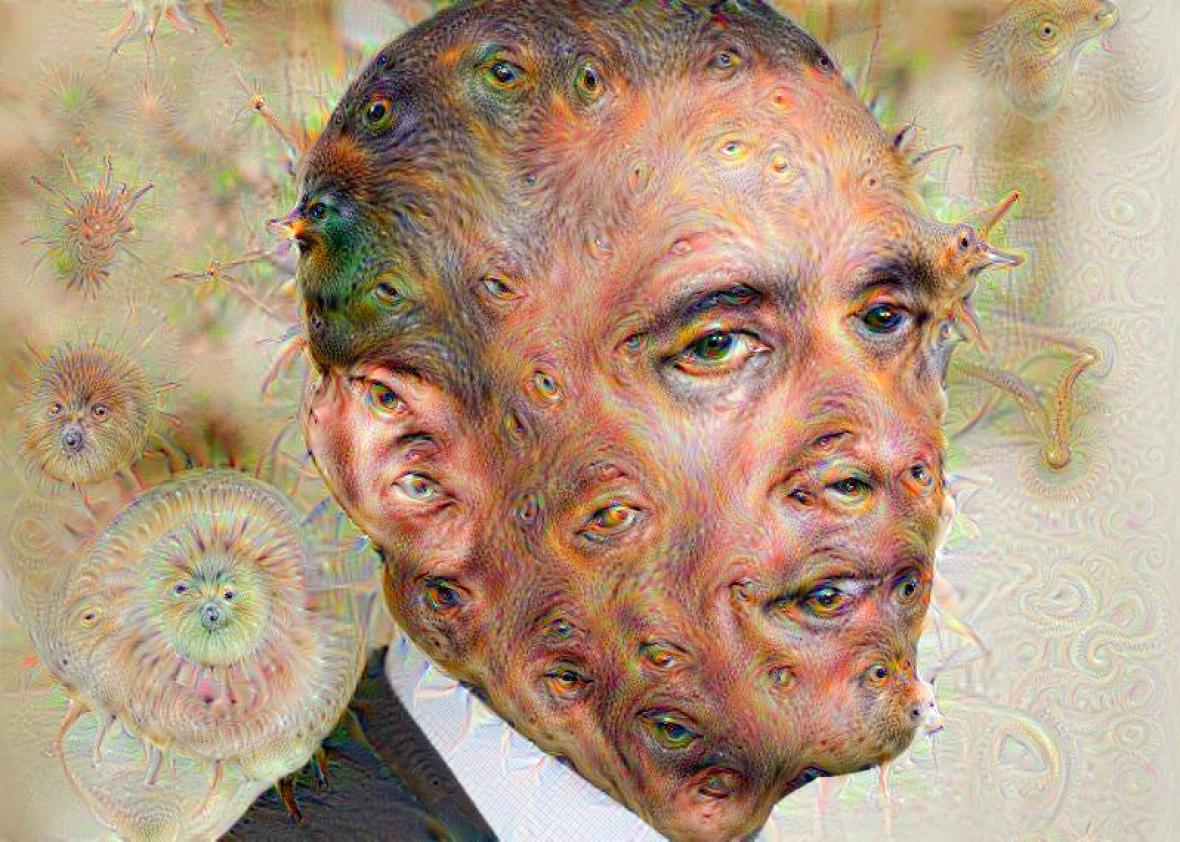
What makes GANs unique is that they can be used to create completely new images instead of working on pre-existing ones. To make it simple and less technical, the logic behind GANs can be explained in two parts: in the generative part programmers train the algorithm on a specific dataset big enough to reliably recognize what it is. For example, the dataset can be pictures of trees. When the algorithm learns enough about trees through the dataset, it can then be instructed to generate a whole new image of a tree. The second part is called the adversarial in which the “discriminator” learns to distinguish the generator’s fake image from those created by humans. This can also be understood as a Turing test for artworks.
From this point on the creation process of original artwork is pretty straightforward: after the user enters a keyword or a sentence, the algorithm will produce the representation of the original text according to its own interpretation whilst analyzing millions of images around the web. As algorithms train more and more they are able to generate visually complex imagery that is also appealing.
Considering the fact that it is possible to create a fully original artwork using these algorithms, it is not a surprise that AI-generated art is becoming hugely popular in the NFT market where uniqueness is an important parameter. Moreover, there are code-free tools that make the image creation process accessible to everyone; which means that AI NFT projects can easily be turned into unique, interactive experiences. This is an important aspect to consider since many technology experts argue that NFTs are more about experiences rather than the content or the asset itself.
In order to get a deeper understanding of how generative art is being leveraged in the NFT market, here are some examples of popular AI-generated NFT projects:
- Lost Poets: Created by the digital artist Pak (formerly known as Murat Pak), Lost Poets is described on its website as “an NFT collectible and a strategy game”. While the project initially raised nearly $70 million upon its release in September 2021, Lost Poets is a mystery for everyone except Pak, who Tweeted that it is a “single art piece owned by thousands of collectors”. According to its website, Lost Poets will take its final form in 365 days. What is further known about the project is that each Poet NFT is created by an AI which was specifically developed for that purpose and every Poet comes from one of the 1024 pure origin NFTs. These origins are manipulated by 256 different latent genes, making every Poet unique.
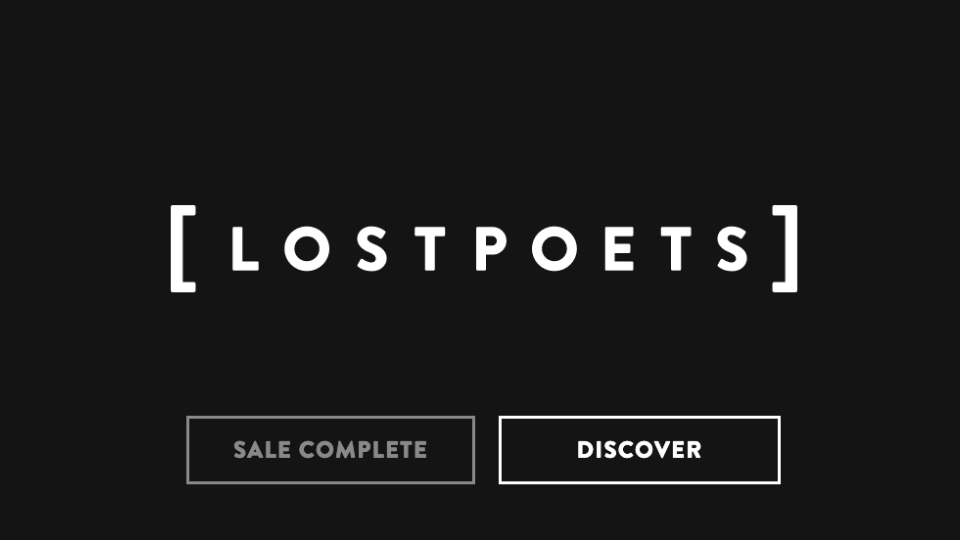
- Eponym: Described as “a state-of-the-art generative algorithm” which uses a text-to-image generator to create an abstract artwork in 1 minute. The resulting image comes directly from the AI understanding of the phrase. The users can refresh the algorithm endlessly until they find a depiction of their prompt that they would like to mint. This gives the collectors a role in the creation process of the art they would like to buy. This is one of the reasons why the project has drawn praise from some of the more well-known NFT art collectors and became an instant hit on social media. Eponym was created by ART AI some of the world’s best generative art engineers worked on the project for two years. It is depicted as the world’s first and largest collectively created NFT art collection
- Botto: Another interesting AI art project is Botto, which continuously develops its own sense of taste based on community feedback. Self-described as a “decentralized artist”, the algorithm creates 300 fragments a day based on the prompts it generates by itself. Out of these pieces, 350 are selected by Botto to present for voting. Each week, the final artwork is minted as an NFT to be auctioned at SuperRare. Created by the German artist Mario Klingemann, Botto has released five NFTs so far and it has a community of 5000 which continues to grow every day. So far, the project has made over £1 million.
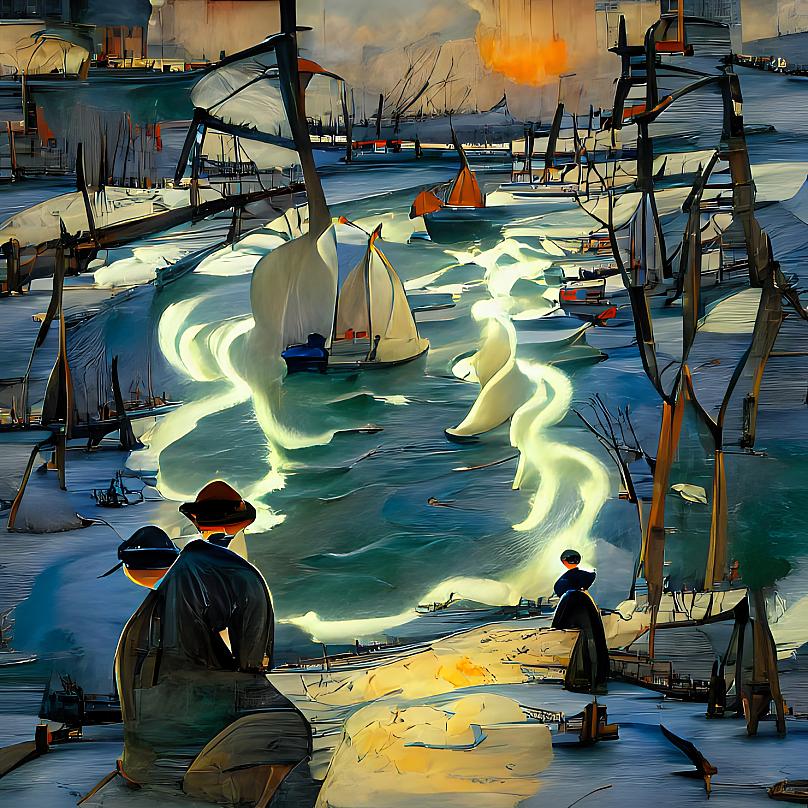
- Framergence: This is a generative art experiment with a unique burn-to-mint mechanism. Pieces with geometric lines are drawn in front of the collector as soon as they are minted. However, for every N piece that is minted, (N+1) pieces need to be burned. Thus, the total supply is reduced by 1 each time. The platform claims that not more than 1000 pieces will ever exist. The system makes Framergence the first deflationary NFT project.
With the combination of AI-generated content and opportunities offered by blockchain, the NFT market continues to become more and more interesting every day. It is exciting to see how far the art created by artificial intelligence can go and the sales prove that there is a great interest in the evolution of AI-generated art. As these technologies become more available to the world of art; we’ll continue witnessing the birth of new, compelling projects in the future.

